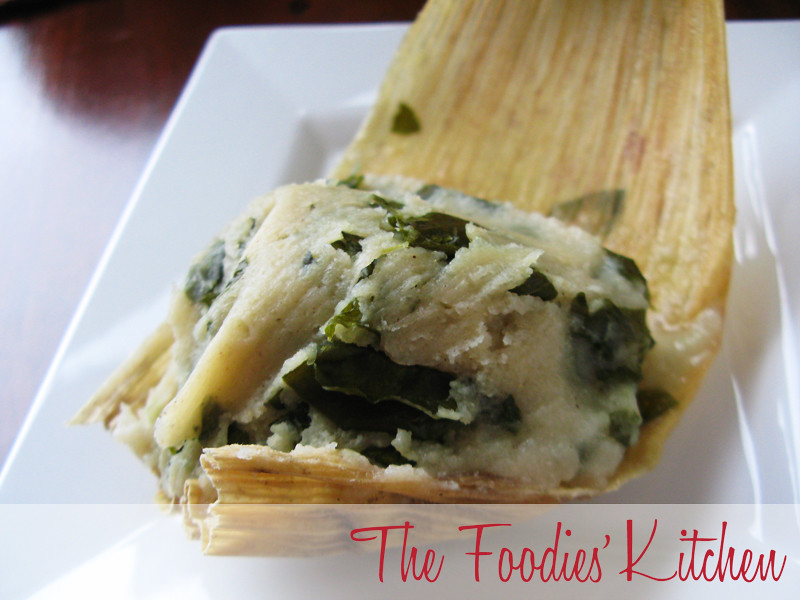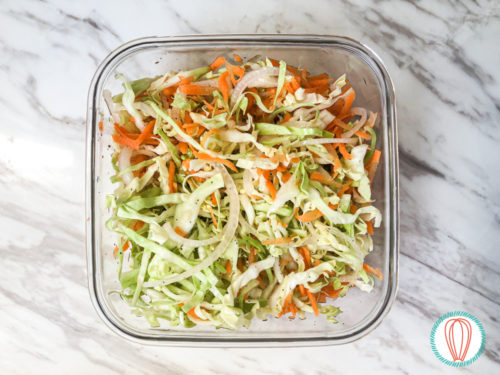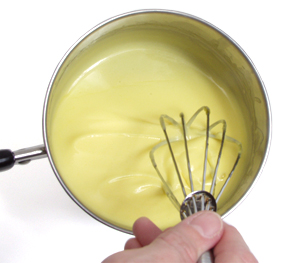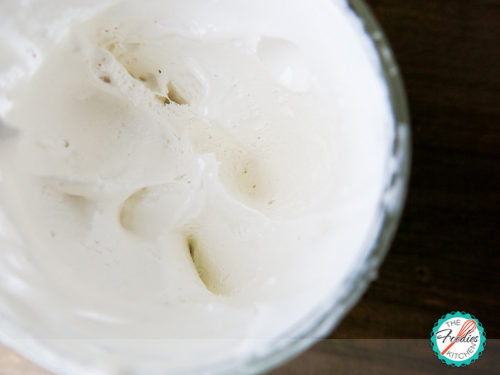
Tamalitos de Chipilín
This post is also available in / Esta entrada también está disponible en ESPAÑOL (SPANISH)
September is here, and just like last year, we wanted to share with you our typical Guatemalan dishes. This recipe is for Tamalitos de Chipilín.
A tamal is a traditional Latin American dish made of masa (corn dough) which is wrapped in corn husks or plantain leaves. This wrapping is discarded to enjoy the tamal. They can be filled with chicken or pork meat, loroco, chipilín, and they are seasoned with a delicious red sauce called recado.
This variation does not have any meat in them, you can prepare the plain kind which is just made out of masa, or mix in chipilín leaves. These leaves are commonly used in Central American cooking and impart a special flavor in certain dishes, even though I am asking that you use 2 bunches of chipilín leaves which you will think is a lot, trust me. Use them all. I am aware that you will probably not be able to find these leaves abroad, so as a variation of the plain tamal, just before you wrap it I recommend you put in a thin slice of white cheese (queso fresco).
To enjoy your tamal, you can eat it just as it is, served warm with a little cream. Another way is to slice it up and heat them in your toaster oven and spread some cream cheese on top.
Now, regarding this recipe and its procedure. It seems like a very long procedure but that’s just because I wanted to describe each part of the process well. Essentially, you just have to mix all the ingredients, grab a small portion with you hand to make a little “mud pie” with it, place in on the leaf and wrap it up. The wrapping is very easy too, so don’t be intimidated by the length of the recipe.
This recipe was given to me by Sandra, she helped me out last year by showing me how to make Kaq-ik, which we posted last September.
Tips:
- Mix the corn flour with water a little bit at a time, alternating them.
- When you’ve used up half of the flour and water, mix in the margarine.
These will keep in the refrigerator for a few days, if you won’t serve them all, it is best if you freeze them. If frozen, you can heat them up in a pot with about 2 inches of water for about 12 minutes. If you’re just pulling them from the fridge, pop them in the microwave.
I hope you try it!
Helga
Tamalitos de Chipilín
A Foodies’ Kitchen Original
Yields approx. 20 units
Ingredients:
1 package corn flour, 2lb (Maseca)
1 ½ sticks of margarine
2 ½ cups of water
2 ½ cups of chicken broth (consomé)
1 tablespoon salt
2 bunches chipilin leaves
2 bunches of corn husks (tuza)
Procedure:
- Wash your hands.
- In a large bowl which you will use for mixing, put about ¼ of the flour in and add some of the water (maybe 1 cup). Start mixing it in using your hands.
- Add some more flour, add about another cup of water. Mix it in.
- Add the margarine. Mix it in. More flour, then add the chicken broth. Mix it in.
- Add more flour and more water or chicken broth until you have finished the Maseca package.
- Add the chipilin leaves, a handful at a time.
- Mix, mix, mix.
- This mix should feel moist, but not wet. Try to get an idea of the texture through our photographs.
Assembly:
- Take a couple of individual corn husks, and cut strips out of them, which you will use to tie up your tamal. Make about 24 strips.
- Place a corn husk on the counter. Open it up
- Place about a handful of masa in your hand, try to give it an oval shape.
- Put it in the middle of your corn husk, leaving a space of about 2 inches on the top (this is the part you’ll tie up).
- Fold the sides in.
- Fold the bottom up.
- Gather the top together by sort of crunching it
- Tie it tightly with a strip of corn husk. Go around a couple of times and then tie it up.
- Set aside. You have your tamalito!
- Repeat all the assembly steps until you have used up all your masa.
Cooking:
- Get a large, deep pot (see picture bellow).
- Place a few corn husks on the bottom of the pot.
- Start arranging all your tamalitos, tied side up. Side by side.
- Fill the pot with water until you have just covered them.
- Place a wet cloth on top, to cover them.
- Cover your pot with the lid.
- Turn the heat to Medium and wait for it to start boiling, about 15 min
- Set your timer to 1 ½ hours.
- When the time is up, remove the cloth carefully so you don’t burn yourself and drain out any liquid.
- Serve warm!
- You can leave them in the pot if you will serve them within a few hours. Otherwise, lift them out of the pot using thongs and let them cool. Then refrigerate them.
Have you made this recipe?
Please let me know how it turned out for you! Leave a comment below and share a picture with the hashtag #thefoodieskitchen!
Want more?
You can subscribe to our newsletter and we’ll send you the monthly recipes! You can also keep up to date on Facebook, Twitter, Instagram, Pinterest, or Tumblr.
© 2011 – 2022, The Foodies’ Kitchen. All rights reserved | Todos los derechos reservados
This post is also available in / Esta entrada también está disponible en ESPAÑOL (SPANISH)
























Comments (19)
Claudia
October 3, 2011 at 4:29 pm
I am from Guatemala. You did a beautiful job with this recipe. Thank you so much
Helga
October 3, 2011 at 6:00 pm
Thank you Claudia!
It’s so hard to find good, accurate Guatemalan recipes online. We want people from around the world to know about Guatemalan Cuisine, and also help our fellow Chapines to make dishes like these tamalitos and other delicious recipes which are passed down from previous generations, but that we can’t follow from those old cook books!
We will try to get our hands on more recipes!
The Foodies’ Kitchen
Zoe
November 3, 2012 at 1:09 pm
A wonderful woman taught me how to make these while I was visiting Guatemala, and I would love to make them again here in Seattle, but I can’t find Chipilin anywhere! Any ideas of where to buy it or good substitutions?
Kitty
November 3, 2012 at 1:19 pm
Hi Zoe! Let us ask around and see if maybe you can find something in Seattle that resembles Chipilín! Was just searching online and couldn’t find much. What we can think of for now, is that you pay close attention to LatinAmerican markets – sometimes these ingredients pop up. Also, if you get the chance to get someone in Los Angeles to get it for you, I am thinking that the Guatemalan and Salvadoran communities are big so there must be some Chipilin :)
Thanks for writing!
Kitty
Cristina
February 25, 2013 at 7:15 pm
Thank you so much for sharing. I’m also from Guatemala and its hard to find good chapin recipes.
Kitty
February 25, 2013 at 7:24 pm
We’re glad you like our lil’ site! :) Let us know if you want a specific guatemalan recipe for us to take a shot at and post it here!
~ Kitty
Alberto
March 3, 2013 at 4:12 pm
Me regalaron semillas de chipilín pero todavía no las he sembrado. Me las dió un amigo Mexicano. Yo vivi en el área de Miami así que la temperature es idónea. También sembrè semillas de chiltepe y ya salieron las planticas, vamos a ver si tengo buena cosecha. By te way yo soy Cubano pero viví en Guatemala por tres años.
Kitty
March 3, 2013 at 9:27 pm
Gracias por tu comentario Alberto!
La temperatura es idónea para sembrar chipilín como tu dices! Esperamos que tengas buena cosecha.
Kitty & Helga
————————————–
Thanks for your comment Alberto!
Yes, the temperature for growing chipilín is perfect as you mention! We hop you have a great harvest.
Kitty & Helga
Edgar
January 3, 2014 at 4:36 pm
alguien sabe de que se trata la toalla o trapo que le ponen a los tamales? alluda a herbir o a crear vapor? gracias por la receta.
Kitty
January 6, 2014 at 5:26 pm
Hola Edgar! Efectivamente es para crear vapor, de esta manera no necesitas de una vaporera especial para cocinarlos.
Karen Perez
January 11, 2014 at 4:20 am
My mom makes a variation of these tamalitos. she uses banana leaves instead and aluminum foil to keep it together. She also adds black beans to them and they taste so delicious. It is of course topped with some Guatemalan salsa!! We love it when she makes them :-D
In regards to the chipilin leaves, she buys them frozen at a Latin American store. They carry a lot of things coming from Central and South America.
You made me want to give this recipe a try. We’ll see how it goes :-)
Kitty
January 11, 2014 at 8:38 am
Hi Karen! Thanks for your reply! That is a great idea for replacing the corn husks. Sounds like a great variation for the Tamalitos with black beans and salsa (we’d love them too!). Let us know how the recipe turns out, and thank you for the amazon page suggestion to buy Central and South American products!
Ada
April 23, 2014 at 12:37 pm
This looks really good where can I buy chipilin in Los Angeles area
Kitty
April 24, 2014 at 8:11 am
Hi Ada! Thanks for your comment! We suggest you look for specialty stores for Latin American products… or even farmers markets! Ask around which ones are the markets with big central american produce, and we are sure you will find the chipilín there!
Má. de Guadalupe Alaluf
August 19, 2014 at 12:06 pm
Soy mexicana y siempre los he comido como tamales de Chiapas, Oaxaca,Tabasco … Creo que son de la región o …. mayas? Lo que sí sé, es su ricura mmmmm.. Con chaya quedan igual de buenos, sobretodo si les agregas queso en el centro y acá en Veracruz los comemos con epazote! Pruébenlos. Excelente paso a paso de la receta gracias por dar a conocer nuestras comidas latinas Kitty.
Kitty
August 20, 2014 at 1:50 pm
Hola Ma. Guadalupe! Gracias por tus palabras! Es muy posible que los nombres de ciertas hierbas cambien por la región, pero lo que si sabemos es que estos tamalitos son deliciosos!
Isabel
December 14, 2014 at 8:14 am
Yo soy de guatemala y me encanto su receta! Gracias, alguna sugerencia de donde conseguirlos en USA por internet? Me encantaria hacerlos y aqui en MS no hay donde se consiguen.
Kitty
December 15, 2014 at 4:03 pm
Hola Isabel! Gracias por su comentario! No hemos encontrado información de dónde venden el chipilín en línea, pero si hemos leído que en los Farmers Market, y en supermercados mexicanos-latinos venden paquetes de hojas de chipilín congeladas. Esperamos que las encuentre!
Kitty Florido
November 9, 2020 at 9:16 am
Hi Zoe! We had a reader approach us to see if you were interested in some Chipilín leaves? Email us and we can make the proper introductions 🙂